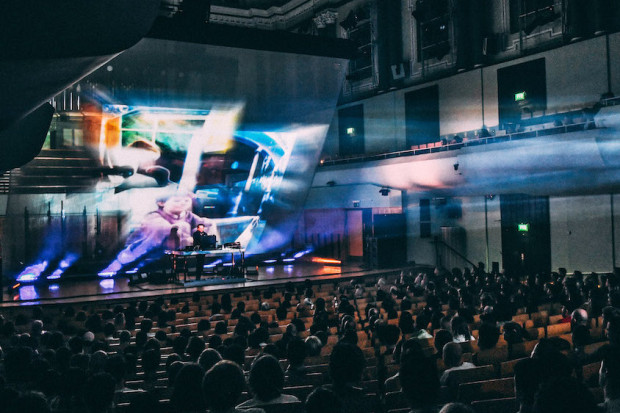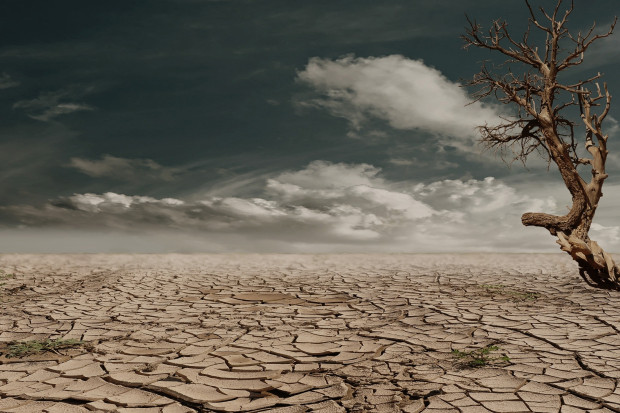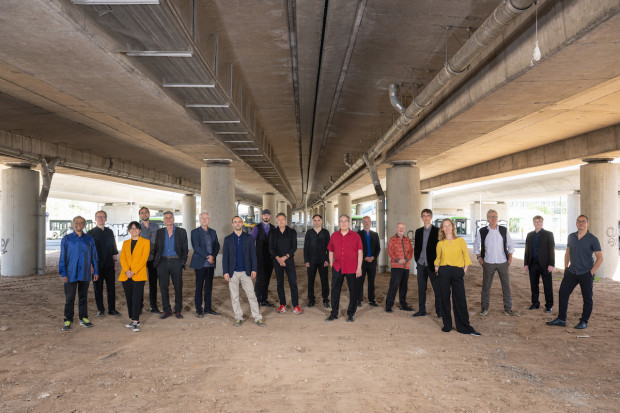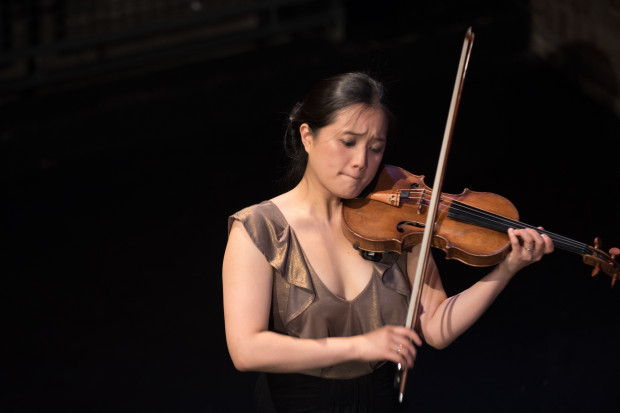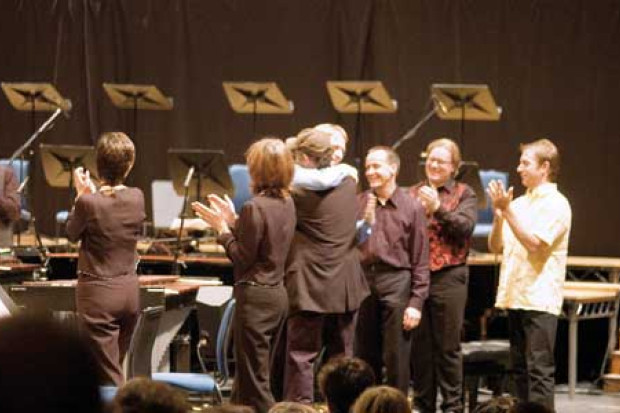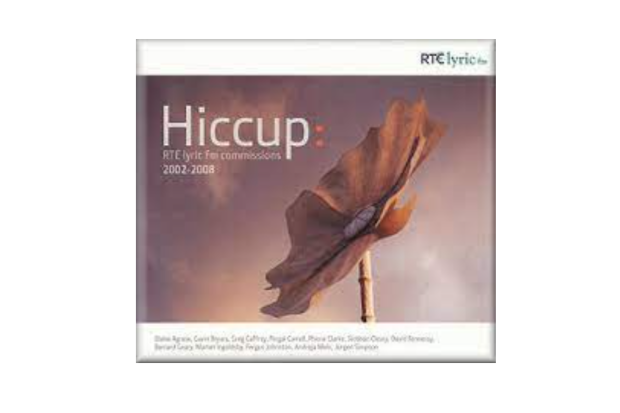Live Reviews: i-and-e festival
Building on last year’s one-day event, the second i-and-e festival of improvised music took place on Friday 31 March and Saturday 1 April. In Ireland, where improvised music enters people’s consciousness at all, it is largely in terms of jazz or jazz-derived music. The music to be heard at the i-and-e festival, on the other hand, though sometimes over-lapping with elements of what could be called the jazz avant-garde, has a fundamentally different approach.
The senior guest at this year’s festival was Keith Rowe, best known as a member of AMM, a small group of musicians who, in the 1960s, set out to create a new kind of music. These musicians renounced conventional rhythm in favour of pulse and dedicated themselves to the slow, touch-by-touch building of music that is experienced as a deep space in which sound seems to hang. The analogy with the visual arts is not coincidental, though of course, no matter how much musicians (whether Feldman or AMM) draw inspiration from painting, there will always be a difference between artistic space and musical space. In performance, AMM dissolved individual voices into a collective co-creative process, making it difficult (or irrelevant) to identify the provenance of many sounds. The renunciation of the solo was made visible in the horizontal positioning of Rowe’s guitar (which became a surface to be treated or worked on, not an extension of a personality) and the frequently dim lighting in which the musicians calmly went about their business.
The younger musicians who performed at the i-and-e festival would in large measure share the AMM ethos, even if their technology (laptops figured as prominently as any conventional instruments) is of another generation. Most of the musicians performed at least once, and always in a different format – Annette Krebs, for example, appearing solo, in a quartet and in the closing trio).
Jürgen Simpson opened proceedings on Friday night. On laptop and assorted electronica, he gave us, in i-and-e terms, a relatively extravagant performance: from thin, high pitches, through swirling, shifting soundscapes, down to deep rumbling registers. There was a different kind of spatial layering in the way sounds emerged – displacing others or forcing them to recede – as they pushed forward. It was an impressive rather than an engaging display. Second up was the trio of Mathias Forge (trombone), Paul Vogel (laptop and clarinet) and Birgit Ulher (trumpet). This was a much more restrained set, with both Forge and Ulher contenting themselves with gentle, pause-laden half-blown notes, sometimes involving mutes or use of the mouthpiece only. Paul Vogel’s electronics provided both texture and connecting tissue, while his sustained notes on the clarinet gave direction to a performance that might otherwise have puttered out.
The individual sounds (a hovering plink, a sudden jangle) offered by Annette Krebs in her solo performance were interesting but, to these ears, the dots didn’t seem to join up. The concluding duo of Keith Rowe and Mark Wastell (electronics and percussion) was a fine example of co-creation – the sound denser, more massed, more symphonic even, than would have been expected. Both in this duo and in a trio the following afternoon, Wastell showed himself a refined and responsive sculptor of sound.
Which of the two Saturday afternoon sets was better? For me, the first – with Wastell, Vogel and David Lacey – was a highlight of the festival. Within seconds, it had established a kind of hushed authority and this suitably meditative tone – we were in the Unitarian church on Stephen’s Green – was perfectly sustained to the end. There was subtle variety to the collective sound: Lacey on percussion could drop out completely, work the surfaces and intervene decisively; Vogel (looking quite monk-like in this context) was at his best; and the hummings that Wastell drew from the cymbals, and his delicate tapping of stick on rim, were finely judged.
American percussionist Sean Meehan is a true minimalist. Given that sounds of music and celebratory whooping from a nearby venue were clearly audible, was his exploration of the edge of silence as much a mark of inflexibility as of dedication? Rowe had no option but to work the same territory. Concentration wavered for some of us; for a minority, perhaps, this was the performance that mattered.
On Saturday night, an extremely attentive audience – which two or three years ago would scarcely have outnumbered the players – again packed the Printing House. The quartet of Lacey, Vogel, Rowe and Krebs did not fascinate at every point but worked their way to an impressive conclusion. In the trio that followed, with the rustling, ringing and vibrating of Wastell on one side of him and Meehan’s whisperings and rubbings on the other, Dennis McNulty (on laptop) supplied a discreet but multi-textured narrative that encompassed a surprising degree of lyricism. With Mick O’Shea quietly effective on laptop, a little more responsiveness on Mathias Forge’s part would have offered Fergus Kelly — whose inventiveness combines appeal to the eye, clever engineeering and sonic exploration – more scope for creative interaction in their trio. Some festivals would finish up on a crash-bang blow-out. True to form, i-and-e went for three players – Meehan, Krebs and Ulher. – united by a taste for understatement. The occasion brought out the best in Ulher and Krebs.
There remained all those yards of wiring to roll up, those equipment-laden tables to clear, the pieces of foam and the bowls and the bows and the knick-knacks to be bagged – to the non-electronic hum of the contented participants. Mission accomplished.
Published on 1 May 2006
Barra Ó Séaghdha is a writer on cultural politics, literature and music.












